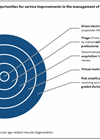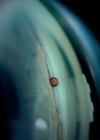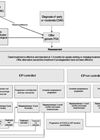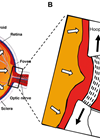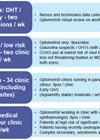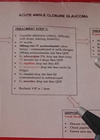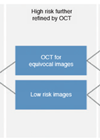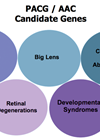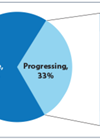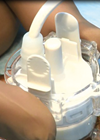Ophthalmology
Quality matters in the management of serious eye disorders
The author discusses the first quality standard for serious eye disorders from NICE and takes a look at new care models for enhanced service delivery. Patient backlogs pose risks to patient safety, with research showing that people are losing sight...
The ‘theatre of the mind’: Charles Bonnet Syndrome and Esme’s Umbrella
The founder of Esme’s Umbrella shares her experience with the poorly understood condition Charles Bonnet Syndrome and the creation of the campaign. Many years ago, when I was a young actress, I was in an American play called ‘Butterflies are...
Best way to detect glaucoma progression: by reflecting on the past 25 years
Glaucoma – a condition of optic neuropathy leading to progressive visual field loss often associated with raised intraocular pressure. It is fair to say that our definition for this condition has remained unchanged over the last 25 years and the...
Refined glaucoma referral practice offers prospect of improved capacity and expanded role for primary eye care professionals
Glaucoma is the most frequent cause of irreversible blindness worldwide and the second leading cause of blindness in the UK [1,2]. The global prevalence of glaucoma in 2010 was approximately 3.5% for people aged 40-80 years, according to Jonas et...
Could the sclera be key to glaucoma?
The glaucomas are a group of conditions characterised by optic neuropathy and associated visual field defects. Of these, chronic open-angle glaucoma (COAG) – diagnosed on the basis of progressive structural changes to the optic nerve head (ONH) and nerve fibre...
Learnings and trends in the management of open-angle and angle-closure glaucoma
To be truly disruptive, newer technologies need to offer a quality of life benefit over medication to a broad population of glaucoma sufferers. Evidence and converging trends in medical and surgical management of glaucoma were explored in counterpoint discussions and...
#KnowYourDrops: breaking down barriers to poor compliance
Award-winning* #KnowYourDrops eye drop compliance campaign helps patients for World Glaucoma Week to achieve medicines optimisation in ophthalmology. The #KnowYourDrops campaign is fast becoming an internationally recognised model to help support healthcare professionals, with the provision of better tailored ophthalmic...
Under pressure: a tool to aid the non-ophthalmic practitioner in the timely management of acute angle closure
Acute angle closure is a true ophthalmic emergency that mandates timely diagnosis and treatment. The priority in initial management is to lower the intraocular pressure in an expeditious matter using medical treatments. The risk of irreversible glaucomatous optic neuropathy is...
‘The Way Forward’ champions clinicians as architects of patient-centred service redesign
The demographic time bomb poses the dilemma of how more healthcare can be delivered to the UK’s ageing population without commensurate growth in resources. The Way Forward Project provides a robust resource for clinical centres to better identify and implement...
Breakthroughs in the genetics of angle-closure glaucoma
Angle closure glaucoma (ACG) is not widely known to be a familial condition, yet the recent explosion of genetic data and large scale genome wide investigations have confirmed at least 13 genetic loci associated with ACG [1], and provided some...
The structure function relationship in glaucoma
Chronic open angle glaucoma (COAG) is the second most common cause of blindness worldwide. It is diagnosed on the basis of three clinical signs, raised intraocular pressure (IOP), visual field (VF) defects and structural changes to the optic nerve head...
A closer look at the new wave of glaucoma surgery – radical or old school?
Glaucoma is a challenging condition to treat because the exact pathophysiology remains unclear and the only readily modifiable factor is the intraocular pressure (IOP). Additionally, most glaucoma patients are completely asymptomatic, yet are often subjected to lifelong medical therapy. The...


